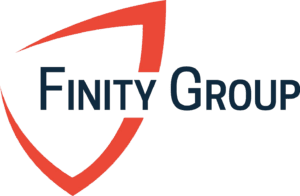Written by: Corey Janoff
Written by: Corey Janoff
Everyone would prefer to make their money work for them rather than working for their money. Working takes effort – it is exhausting! What if we could sit back, kick our feet up, and watch the cash flow in? Well, you can! It’s called “passive income.” Passive income is money you earn that you don’t directly work for (as opposed to active income). Want to know how to make passive income as a doctor? Many of you have limited time outside your day jobs to devote to anything, but there are plenty of opportunities for you. We’ve written about side hustles for doctors before, but who has time for that? Today we are going to look at the best passive income streams for doctors in 2020.
1. High Yield Savings
A high yield savings account is simply a bank account that pays you higher than average interest. Interest rates are at historic lows at the time of this writing (August 2020), so a high-interest savings account won’t exactly make you rich. You are looking at an interest rate of about 1% on the high end. However, 1% is about 1% more than what you are probably receiving on your current bank checking account. It’s also better than nothing. If you have $50,000 in savings, that’s $500/year in interest. Not too, shabby!
A high-interest savings account is the best passive income for doctors looking for the easiest way to make a dollar. It takes zero effort! There is no reason not to have high-interest savings account for the majority of your bank savings.
You may have to go to a different bank than the one you currently have. Online banks typically offer the best interest rates. Google “high-interest savings” to find options. You could also see options compiled on BankRate.com. Link the savings account up to your primary checking account online for seamless transfers as needed.
I don’t care what bank you go with. Just make sure the accounts are FDIC insured (meaning it’s a real bank), you can get to your money within a couple of business days, and there are no fees or transaction costs.
2. CD’s
Certificates of Deposit, more commonly known as CDs, are the next easiest way to collect a passive income stream with minimal risk. You can lock in a fixed interest rate for a set period of time. For example, you may purchase a three-year CD, and the interest is guaranteed as long as you hold the CD for the full three years. If you cash it out early, you could pay the penalty or sacrifice some of the accrued interest.
Put the money in the account, don’t touch it, collect interest—the epitome of passive income.
Longer-term CDs (2-5 years) usually offer slightly higher interest rates than a high-interest savings account. However, in August of 2020, they are in the 1% range at best.
3. Dividends from Stocks & Bonds
Stocks and bonds are more exciting passive income streams for physicians; however, they come with more risk than bank accounts and CDs. In return for the additional risk, passive income is potentially higher.
Not all stocks pay dividends, but many do, usually, more established companies. The historical average dividend payout of shares is around 2% per year, but some companies offer dividends upwards of 5%! For example, if you have $10,000 in stock in a company paying a 2% dividend, you will receive $200 in dividends that year (assuming the stock value is stagnant for the year).
Bonds pay out coupon payments rather than dividends, but it is essentially the same thing – interest received for holding the security. The big difference is a bond declares the interest rate they will pay when you purchase it, and unless the bond issuer goes bankrupt, you are all but guaranteed to receive your expected interest payments. With a stock, the company could change its dividend payment (or choose to stop paying a dividend), and the price of the stock could change in value, affecting your total dividend payout (for better or worse).
You can also receive dividends from mutual funds, as mutual funds collect stocks or bonds.
The $10,000 example isn’t very exciting, but say you have a $1 million portfolio. Now you are receiving $20,000 in dividends if the payout is 2%. Up that to $5 million, and you can collect $100,000/year or more potentially from dividends and coupon payments alone without even touching the principal. For some of you doctors out there, that could be more than enough to support your retirement lifestyle.
4. Real Estate Rental Properties
A favorite source of passive income for doctors is real estate, specifically rental properties. If we were to rank types of passive income for doctors on a scale of passiveness (how much effort is involved), rental properties would fall somewhere in the middle to the high end of the spectrum. You cannot ignore the property entirely and still expect it to be profitable. However, you could hire a property manager to take care of many of the tedious tasks and responsibilities, requiring you to spot check things monthly.
Real estate can be a fantastic source of passive income. It could also be a great source of passive losses if you’re not careful! We’ve all heard of the money pit property that is always needing repairs and has a revolving door of bad tenants. Buyer beware. If you do your due diligence before purchasing properties, real estate rental properties can be one of the best passive income streams for physicians.
5. Real Estate Crowdfunding
Real estate crowdfunding is a more passive income stream for doctors than individual rental properties and requires less money upfront. If you want to purchase a rental house or an apartment complex, you will typically need at least a 25% down payment (you can’t use a physician mortgage loan for rental properties). Not all doctors have that lying around. Real estate crowdfunding has become a popular way to invest in rental properties with as little as $5,000.
There are many different online real estate crowdfunding platforms out there, all with different ways to invest. Essentially you are pooling your money with hundreds (even thousands) of other investors to acquire a property, often largescale office buildings or apartment complexes. Some let you preview and choose the specific property you are buying into. Others offer various portfolios to choose from. On some platforms, you are part-owner of the property and collect a portion of the rental income. Others are funding the mortgage on the property and collecting interest payments from that.
All of the crowdfunding sites have management teams who take a cut of the revenues or profits from the building (there is no free lunch). Like traditional rental properties, you often can’t get your money back until the property is sold. Unlike traditional rental properties, you don’t get to decide when to sell the property.
Be sure to do your research before moving forward with one of these options, but this can be an excellent way for a doctor to dip their toes into real estate investing without much capital or diversify across many properties.
6. Peer-to-Peer Lending
Peer-to-peer lending has become popular in the last decade for both borrowers and lenders as online platforms have made it easy for people to pool resources that lend money to individuals. The people who seek loans from these peer-to-peer lending sites often have poor credit and are trying to pay off a high-interest rate credit card. They might borrow a few thousand dollars at 18% interest to pay off a credit card with a 30% interest.
The people funding the loans (you) can lend short-term money to these borrowers and collect a nice interest payment in return (say 15%, while 3% goes to the house using the same example). There is a glaring risk of the borrower not repaying the debt, so it is prudent to diversify across many borrowers.
Most of these platforms allow you to invest in a pool, rather than directly lend to individual borrowers. For example, you might deposit $10,000 (along with thousands of other people), and that money will be distributed across hundreds or even thousands of borrowers. If a few of the borrowers’ default, you still make out alright. You can invest in tranches ranging from high-risk borrowers (more likely to default on the loan payments) to low-risk borrowers (most likely to pay back the loan), with expected interest rates that range accordingly.
For physicians seeking a passive income stream that is more flexible and liquid than the real estate crowdfunding, this could be worth exploring.
7. Own a Business
You’ve all seen the show Shark Tank. Aspiring entrepreneurs present their business plan to the sharks, and the sharks offer them money in return for a stake in the business. Almost every practicing physician has received a pitch from a friend, family member, or somebody asking them to invest in their start-up business.
You could invest in the business, and if it turns out to be a success, start collecting checks as one of the owners. You could also lose your entire investment, as most start-ups fail within a handful of years.
There are various degrees of this. Rather than lending to a friend who is starting a business, you could start your own business and hire people to do the work for you. Maybe you open a cosmetic spa and hire many nurses to do Botox injections while you “supervise” by sitting in the back office watching cat videos on YouTube and managing your fantasy football team. Easy money. You all know someone who is currently doing just that. You make fun of them behind their back, but they laugh their way to the bank (those cat videos are funny).
8. Online Persona
Creating an online persona requires a lot of work, but it is likely the most fun. Many blogs you read and podcasts you listen to generate some income through advertisements on the site. If you are familiar with any physician YouTubers (such as Doctor Mike, or ZDoggMD), you can appreciate how much effort they put into their content. Most physician internet “celebrities” have to work hard to create content and continue producing new content. However, once you have a library of content and a solid following, you can watch the money pile up while exerting the same effort. Maybe you get successful enough to hire others for most of the legwork while you are merely the operation’s face. Other opportunities, such as paid speaking engagements, could arise as well.
Don’t get too excited, though, because most bloggers, podcasters, and YouTubers don’t make any money from their online efforts. The competition is fierce since there are zero barriers to entry. Anyone who has an internet connection can start publishing content. That being said, there is also a little downside (provided you don’t slip up and seriously offend anyone – be sure to keep things politically correct!). If you have some ideas that you want to share with the world, go for it! You never know where it may lead.
What is the Best Passive Income Stream for Doctors?
The answer to that question depends on YOU. What are your goals? How involved do you want to be? How much risk are you willing to take? When do you need the money back? There is no “best” way for everyone. Regardless of how you look at it, though, building a portfolio that generates some passive income can significantly benefit you in the long run and can be a significant part of physicians’ financial planning strategy.




